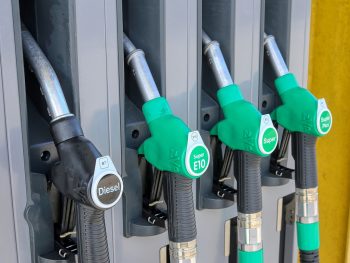Supermarkets charging ‘wildly different’ prices for fuel amid ‘postcode lottery’
UK supermarket fuel prices can vary by as much as 14p a litre across the UK, leaving drivers exposed to a ‘postcode lottery’.

RAC analysis of government data reveals a 14p a litre gap between the highest and lowest-priced supermarket petrol
After three months of falling fuel prices, data from the RAC shows price drops at the pump have ground to a halt.
But its analysis of government data reveals a major gap between the highest and lowest-priced supermarket petrol.
The average price of a litre of unleaded stayed at 140.5p in January while diesel remained at 148.5p, putting the cost of full tanks at £77.24 and £81.73p respectively.
But analysing the prices charged by the big four supermarkets that dominate UK fuel retailing via the Government’s voluntary price reporting scheme, the RAC has found “wildly different” prices are being charged from place to place.
On 31 January there was a 14p difference between the cheapest supermarket fuel and the most expensive. The cheapest litre of unleaded found by the RAC was sold by Sainsbury’s for 131.9p in Oxford and Newport, with the most expensive being Morrisons at 145.9p in Exeter and Ipswich.
While the average difference between a litre of petrol at a supermarket was nearly 12p (11.6p), Tesco had the smallest gap – 8p – between its low of 138.2p and its high of 142.9p.
For diesel there was a spread of more than 14p between the Sainsbury’s forecourts in Oxford and Newport charging 139.9p, compared to Bath at 153.9p. The average spread between supermarkets’ high and low diesel was just over 11p (11.3p).
The RAC said the data that retailers are voluntarily providing to the Competition and Markets Authority (CMA) has shed a whole new light on the pump price postcode lottery.
Its analysis also showed that the average price of petrol in Northern Ireland in January was 4.2p cheaper than the UK average at 136.2p by the end of the month, while diesel was 3.5p lower at 144.9p, showing drivers are still not being charged a fair price across the whole of the country.
RAC fuel spokesman Simon Williams said: “It seems blatantly wrong to us that the very same petrol or diesel can vary in price by as much as 14p a litre, depending on where drivers are filling up.
“Hopefully this will be addressed by the new price monitoring body recommended in the CMA’s report when it’s eventually set up, along with ‘rocket and feather’ pricing where retailers are too slow at passing on the savings from lower wholesale prices to their forecourts.
“We really can’t afford to have a repeat of 2022 where the CMA concluded drivers had been overcharged by major retailers to the tune of £900m. The question is how soon such a body is realistically going to be established, especially with a general election on the horizon.”
The RAC added that the wholesale prices of both petrol and diesel increased by 3p and 4p respectively in January on the back of oil rising to more than $80 for the first time since the end of November.
Despite the attacks on tankers in the Red Sea, the oil market appears relatively stable on the back of weaker global demand. Positively for drivers, analysts aren’t forecasting much short-term change from the current barrel price of $82.
“Interestingly, the recent rise in the price of a barrel has had the effect of squeezing bloated supermarket margins by around 3p a litre. This means drivers are now getting a slightly fairer deal when they fill up,” Williams added.
“But the big question is whether they will be content to operate at this level or whether they will look to get back to an average margin of around 10p, which is in stark contrast to the 3.5p they made on a litre in 2019.”












